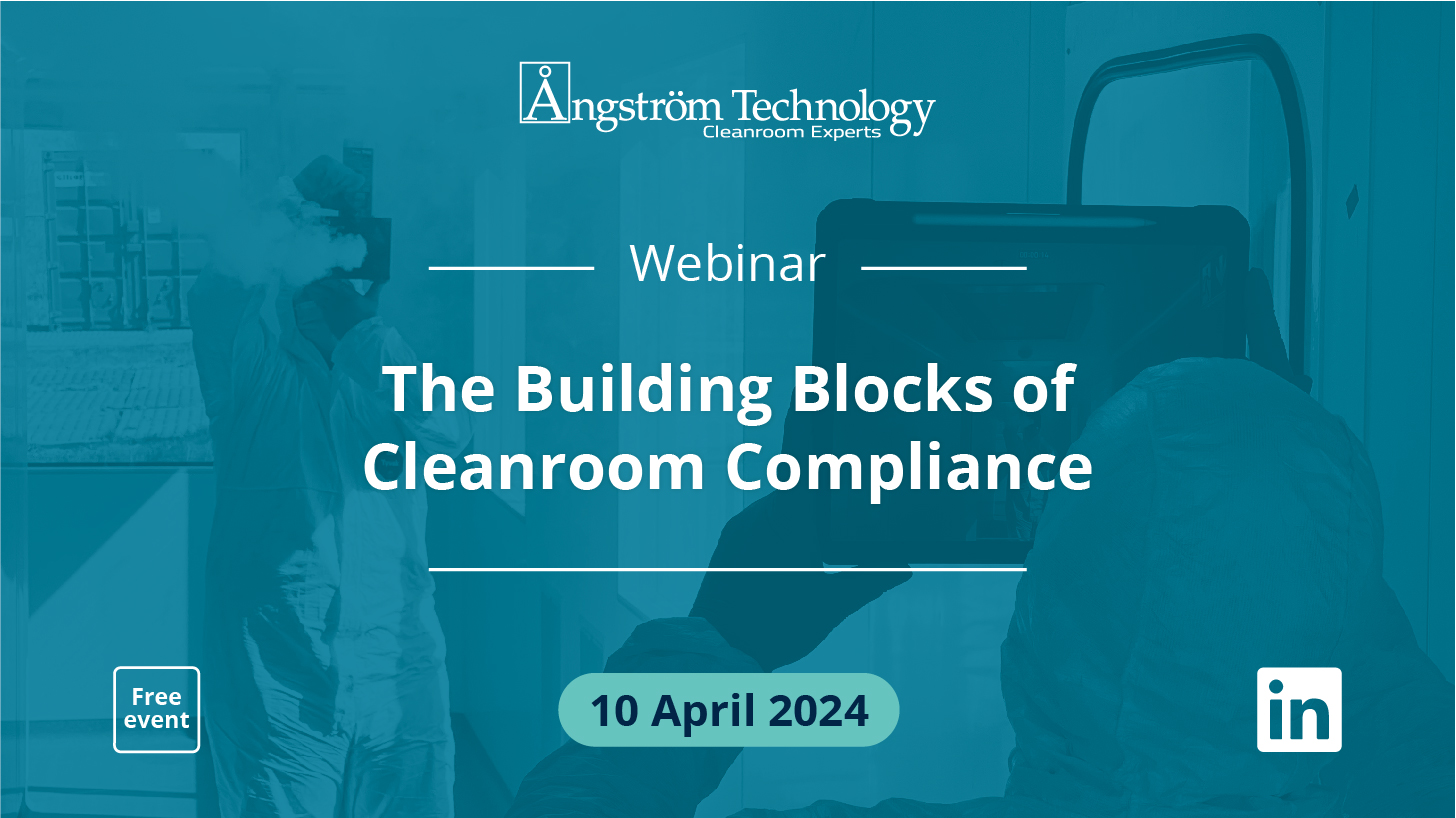A look back at our first webinar of 2024, Building Blocks of Cleanroom Compliance
On Wednesday 10 April 2024, our Regulatory Governance team hosted our first webinar of 2024, The Building Blocks of Cleanroom Compliance, where we were delighted to welcome over 70 attendees!
The webinar consisted of a 20 minute presentation followed by 10 minutes of Q & A. For those of you that missed it, the full video is below!

Regulatory Governance Team
Our regulatory governance team have a combined experience of over 30 years in the GMP cleanroom industry. They are well-versed in navigating the requirements of governing bodies when it comes to regulatory compliance. This webinar aimed to explore what regulatory compliance is, when it should be taken into consideration and the tools & support that are available to assist in regulatory inspection preparation.
 Joan Benson
Joan Benson
Global compliance and quality assurance manager
Joan has 30 years previous experience in Cell and Gene Therapy, Academia, Pharmaceutical Industry, Contract Clinical Research and Hospital Aseptic facilities. She was front facing regulatory inspections in MHRA, FDA, HTA and HFEA for 20 years.

Simon Rice
Global compliance lead
Simon has 8 years previous experience in the production of radiopharmaceuticals within a fully accredited GMP facility manufacturing sterile pharmaceuticals. This gives him a unique understanding on the implications of GMP.
The Webinar
The webinar aimed to share knowledge with peers, covering:
- When is regulatory compliance necessary?
- Developing a User Requirement Specification (URS) and why this is important.
- Pre-project compliance such as layout, process flow, and choosing the correct cleaning & disinfection tools and how they interact with the materials used for building the room.
- Project compliance throughout all stages of the build process
- Qualification of the facility using DQ, IQ, OQ & PQ
- Maintaining compliance during cleanroom use
- Servicing & requalification of GMP facilities
- Regulatory inspections
- Regulatory updates & EU GMP Annex 1 – How to maintain compliance?
The webinar was aimed at anyone who works in a GMP cleanroom facility or laboratory, is responsible for maintaining cleanroom compliance, is in the process of building a GMP cleanroom facility or is looking for regulatory governance consultancy.
Questions & Answers
At the end of the webinar, there was time for Q&A, where the following questions were raised:
We have a lot of customers who are new to GMP, new to pharmaceuticals, they may have worked previously in an ISO background, and when we ask them for a specification for their cleanroom, they don’t always understand the full requirements that come from a User Requirement Specification.
We can support you with this, we can do this in a couple of different ways. If you feel as though you have the capability to prepare the URS but may require some additional support, we can provide you with a template for use for your own URS.
We can have collaborative workshops with you, where we’ll work together with you on preparing a URS or we can offer a full service through consultancy; because of the independence that’s required in this, we have another member of the Regulatory Governance team as well, so one acts as a consultant and the others act as two independent people who can carry out the quality assurance part of this, so you can be assured that it would be an independent function if we provide consultancy.
During the URS phase, we would expect these chemicals, or at least an example of cleaning agents to be used in the rooms to be provided. At the point of design qualification, we provide technical data sheets for the materials of construction we’re going to use and chemical-resistant data sheets as part of that.
When we get through to the installation stage of qualification, we will have evidence that those materials of construction have been used in the construction of the facility, however, it’s worth noting that just because you had the right cleaning chemicals, you need to make sure that they’re actually used appropriately.
So, always make sure that you check for hold times for products, as if you’re using a particularly aggressive chemical such as VHP, if it’s left on there for too long, it can still cause damage to products over time.
This is a question that we’ve had quite recently from a few customers. The simple answer is yes it can be upgraded, but it would be subject to a full review of your cleanroom. We have the capability to offer things like surveys of your cleanroom, which would be completed by our engineering team; we would look at your HVAC systems and see if they’re still suitable for use, and we can look at the structure of your cleanroom and see if it can be upgraded.
One of the things that has come through to us recently is from the new Annex 1, that you need active or ventilated hatches between grades in a GMP cleanroom. There are two options for this, there is an option to reinstall those hatches with HEPA filters in them which some of our customers have taken, or there is a simpler option to ventilate the hatches, if there is enough pressure differential between the rooms you can have drilled hatches so there are holes through the glass, where the hatch takes some of the air from the cleanroom, and on the other side of the hatch you have holes drilled at the bottom of the hatch, and they expel into the dirtier area. This is a satisfactory solution as it shows you have tried to remedy something that is in Annex 1, that wasn’t in the previous version of it.
You will generally find that if you take remedial actions based on your inspector’s findings, these will be accepted. If you’re building a brand new cleanroom from scratch, It’s unlikely that they would accept mitigation like this and they would expect to see it built to a fully compliant design
We all get contamination in our cleanroom at some stage, and there could be two types of contamination here. We could be having particle contamination, where there are too many particles in your environment, or we could be looking at microbial contamination.
In this example, I’ll be using microbial contamination. So, what you should be doing in a GMP cleanroom is monitoring your environmental microbial contamination, you should be trending your data, and for higher classification cleanrooms, you should be identifying those isolates in your cleanroom, and as that trending of data is ongoing, you should be able to see whether you’re getting the same isolates in the cleanroom again.
What we would do is conduct a review of the isolates that are present, we would check this against your cleaning regime (the disinfectants and the cleaning agents that we use) and ascertain whether they are active against it.
When you do the trending of your microbial data, you should also review your cleaning regime once a year to ensure that the cleaning agents and disinfectants that you’re using are active against your microbial contamination, and we can support you with that.


REQUEST A CONSULTATION
We are committed to supporting you through successful audits and inspections, now and in the years to come. To learn more about our GMP consultation services or GMP cleanroom design-build assistance, please contact us by clicking the button below.
CONTACT US